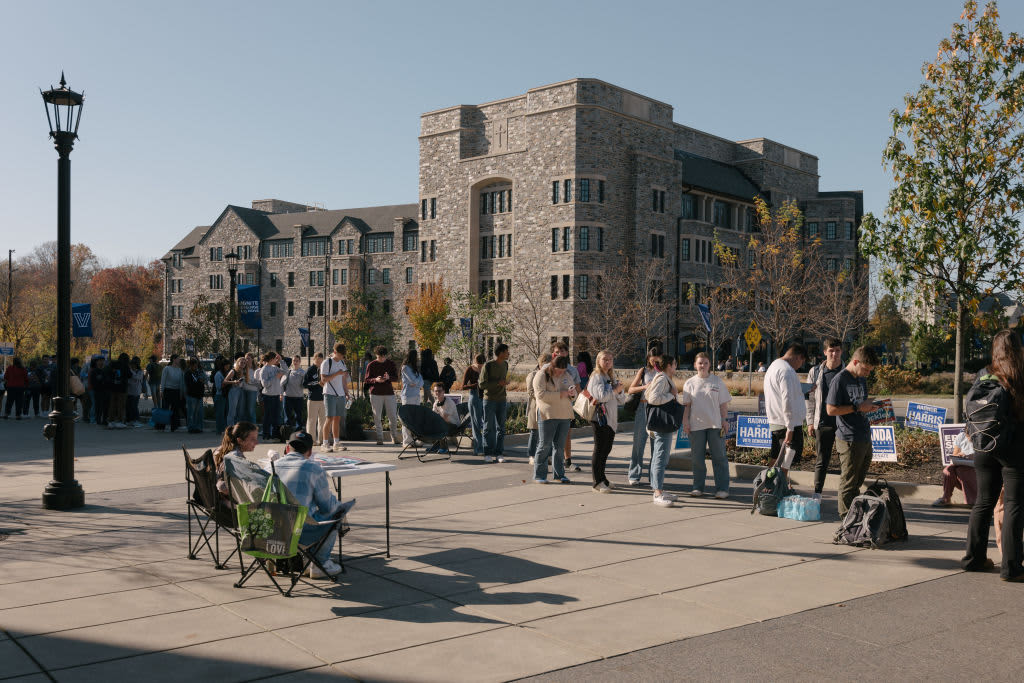Here’s How College-Age People Voted in the 2024 Presidential Election
 Credit: Caroline Gutman / The Washington Post / Getty Images
Credit: Caroline Gutman / The Washington Post / Getty Images- Voters under the age of 30 favored Donald Trump at higher rates than in 2020.
- Overall turnout among this age group seemingly decreased from the previous presidential election.
- Trump’s gains among youth voters were primarily seen among men and white voters.
The 2024 presidential election presented a swing in where traditionally aged college student voters placed their vote.
Voters ages 18-29 favored Vice President Kamala Harris over former President Donald Trump by 6 percentage points (52% vs. 46%), according to data from the Center for Information and Research on Civic Learning and Engagement (CIRCLE).
That was a steep dropoff from the 25-point margin President Joe Biden courted in the 2020 election and may help explain Trump’s sweep of virtually every competitive swing state.
How did this happen?
CIRCLE data points to stark gender division among youth voters. While women in this age range preferred Harris by 18 points, men canceled out many of those votes by favoring Trump by 14 points.
This contrasts with the 2020 election.
In 2020, both young men and women cast their ballots for the Democratic candidate at a higher rate. Support among men shifted the most, but a higher percentage of young women also supported Trump in 2024 compared to the prior election.

Stay in the Know!
Subscribe to our weekly emails and get the latest college news and resources sent straight to your inbox!
White youths favored Trump by 10 points. Minority groups, meanwhile, leaned toward Harris. Young Black voters favored her by 52 points. Hispanic youths favored her by 20 points, and Asian youths favored Harris by 49 points.
Early data also suggests the youth vote was less prevalent overall in 2024.
According to CIRCLE, 42% of registered voters ages 18-29 actually voted in the presidential election. That trails the youth turnout in 2020 (52-55%) and is more in line with turnout in the 2016 election (42-44%).
CIRCLE added that there was an estimated 50% turnout among young voters in battleground states.
There were also wide variations in voter preferences depending on their experience in college.
Young voters without any college education favored Trump by 10 percentage points (54% vs. 44%). Those with some college, including currently enrolled students, favored Harris by 12 points (55% vs. 43%), and college graduates favored her by 14 points.
State-level data points to even more declines that may explain Harris’ loss.
According to CIRCLE, Harris improved upon Biden’s numbers with young voters in only three states: Maine, Wisconsin, and Indiana. Harris won the youth vote in pivotal states like Arizona, Michigan, Georgia, and Pennsylvania, but she did so by a one-digit margin. Biden, meanwhile, earned double-digit margin support among these voters in 2020.
Exit poll data can be misleading at times, and pollsters are expected to gain a better understanding of voter trends with more time to analyze data.